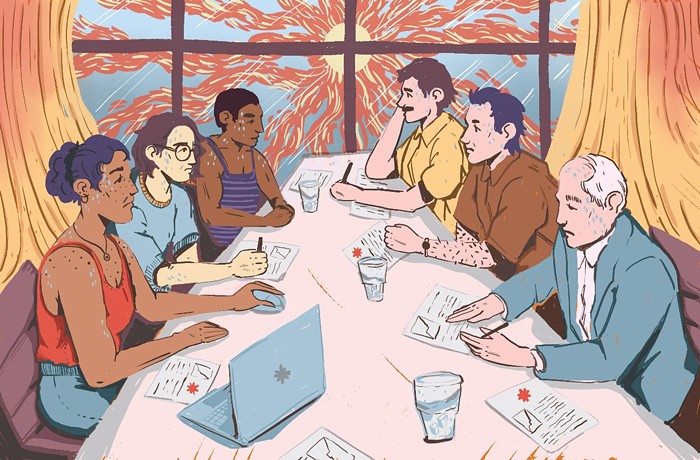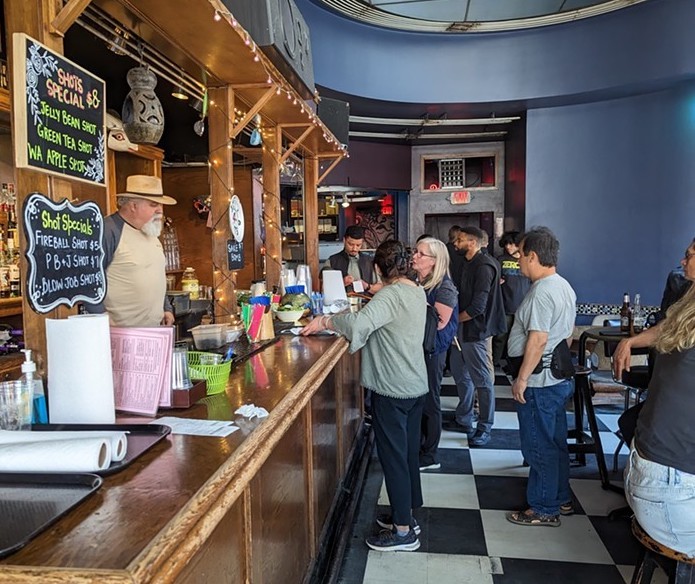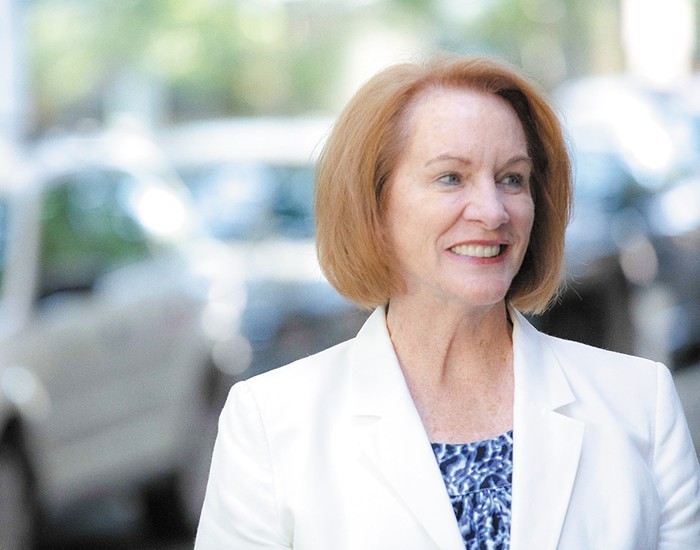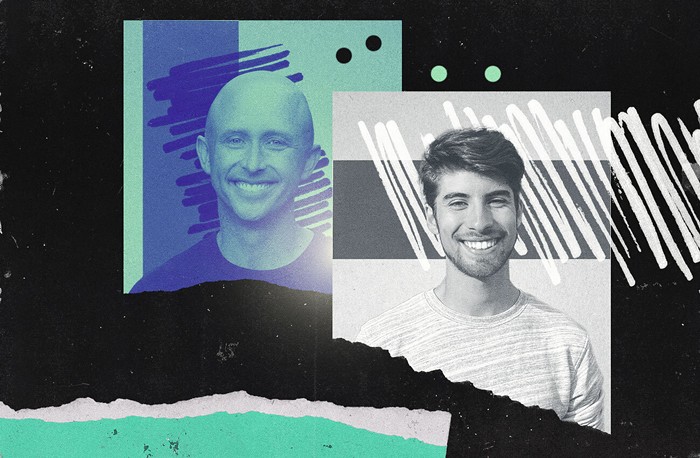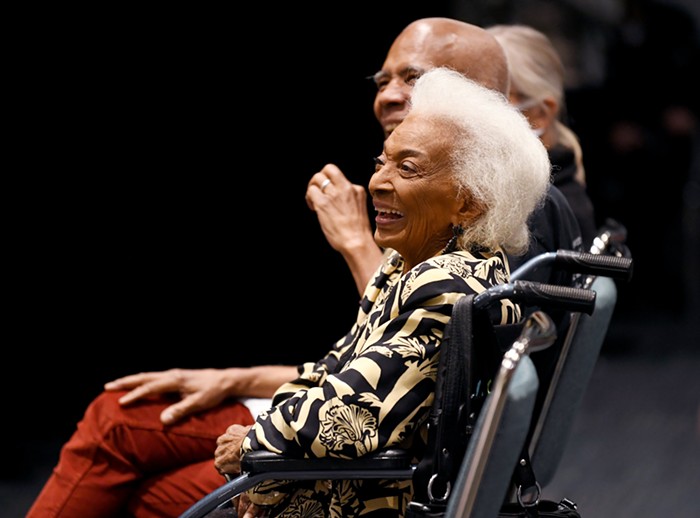
This past April marked the first #JournalismSoWhite talk, a discussion that addressed the lack of diversity in Seattle's newsrooms. (The Stranger is no exception.)
On Tuesday night, a crowd of journalists, students, and other concerned Seattleites gathered at Town Hall to continue the critical discussion. The panelists: Venice Buhain, news editor of The Seattle Globalist; Reagan Jackson, columnist for The Seattle Globalist and editor of The South Seattle Emerald; Mónica Guzman, 2016 Nieman Fellow and founder of the newly launched newsletter, The Evergrey; Andrew Simon, fellowship director at Grist; and Tyrone Beason, editor of The Seattle Times' Pacific Northwest Magazine. The conversation was moderated by Enrique Cerna of KCTS9.
Marcus Harrison Green, editor-in-chief of the South Seattle Emerald, kicked off the evening by reminding the audience of why it's critical to have diverse perspectives in the newsroom. After Michael Flowers was killed by police officers in Renton, said Green, The Seattle Times described him unfairly: just as a felon, rather than a father and someone's son. Green later wrote a humanizing story about Flowers' life in response to the Times' story.
.@mhgreen3000: "It is not only diversity we need in our media. It is a revolution of cultural values." #JournalismSoWhite
— Heidi Groover (@heidigroover) October 26, 2016
A reminder of why this conversation is still relevant: In 1992, 92 percent of journalists were white. As of 2012, newsrooms around the country were still 92 percent white, The Atlantic reported.
Still not convinced? Here's what the panelists had to say:
Some panelists argued that the word "diversity" doesn't mean much anymore.
.@venicebuhain says diversity isn’t a special newsroom beat. it has to be part of our everyday coverage.
— Ana Sofia Knauf (@asknauf) October 26, 2016
.@rejjarts: "Diversity" goals are no longer serving us. Other panelists say it's become a meaningless HR term. #JournalismSoWhite
— Scary Clownstone (@sydbrownstone) October 26, 2016
So how can we encourage writers of color to become journalists? It's starts by changing the system of who is chosen for the job.
Ah yisss. Who has the power? Who has the access? Who is doing the hiring? It didn't just happen in a historical vacuum. #JournalismSoWhite
— joaquin uy (@joaquinuy) October 26, 2016
Consensus from panel: long-term investing in covering diverse community is sustainable. #JournalismSoWhite https://t.co/N6Fmcu8itN
— Josie Hollingsworth (@josieholli) October 26, 2016
Why is #journalismsowhite still? "Growing up, if you're not seeing yourself reflected, why would you want to be a journalist?" @rejjarts
— Crosscut (@Crosscut) October 26, 2016
When the conversation shifted to an audience Q&A, we were derailed by infamous City Hall heckler Alex Tsimerman.
The fact that someone invoked a Nazi salute at the #JournalismSoWhite panel EXEMPLIFIES why these discussions exist.
— Lindsay Hueston (@brookLINDSbridg) October 26, 2016
Thankfully, Cerna quickly shut down Tsimerman's rant and he left soon after. The conversation then shifted to address an important question:
Tough Q for panel from @KJKnodell: Media is divided. At what point writing for your audience and when pandering to them? #JournalismSoWhite
— SPJ W. Washington (@SPJWash) October 26, 2016
.@tyrone_beason "we pander to white men every day and it's not called pandering, it's called 'news'" #JournalismSoWhite
— Jessica Partnow (@partnowjess) October 26, 2016
.@rejjarts at #JournalismSoWhite: I'd rather tell you where I'm coming from, where my blind spots and biases are, than try to be objective.
— Gina Cole (@Gina_Cole_) October 26, 2016
Some important things to keep in mind:
On race, on feminism, you might have a conversation, you can agree on things, but you aren't inherently dropping nuggets of wisdom.
— Jesse Kennemer (@JesseKenn) October 26, 2016
@moniguzman "anyone can commit an act of journ. when they share in the interest of being responsible." #JournalismSoWhite
— Melissa Angela Lin (@Ms_MelissaL) October 26, 2016
Tyrone Beason: "#JournalismSoWhite because the country is so white." White people still hold the reins of power.
— David Kroman (@KromanDavid) October 26, 2016
Noticeably missing from last night's conversation was an honest discussion about money.
Q: why is #JournalismSoWhite?
Unspoken A: MONEYYYYYYYYYYYYYYYYYYYYYYYYYYYYYYYYYYYYYYYYYYYYYYY
— Hanna Brooks Olsen (@mshannabrooks) October 26, 2016
Ok can we talk abt economic barriers that prevent POCs from becoming journos? low pay, unpaid internships #JournalismSoWhite @enriquecerna
— Imana Gunawan (@imanafg) October 26, 2016
Idea: why don't we try pay journos of color more? I'm freelance, doing so much & get like $50-75/ story for white gaze yo #JournalismSoWhite
— Alia M Kusumaningrat (@aliamarsha96) October 26, 2016
And these are fair criticisms. A report from the Poynter Institute compared the salaries of journalists to people working in public relations, which they describe as a similar field. They found that, in 2015, "journalists earned significantly less ($35,600 versus $54,940) and that in the past decade, this pay gap has widened. During the past 10 years, the salaries of journalists haven't even kept up with inflation."
Journalists in Washington earned 20 percent less than the statewide median salary or lower. The report identified Washington as one of the worst places for journalists to work. High costs of living in Washington, among other states, compound this issue. As a result, "journalists in these states are presumably struggling the most," Poynter reported.
